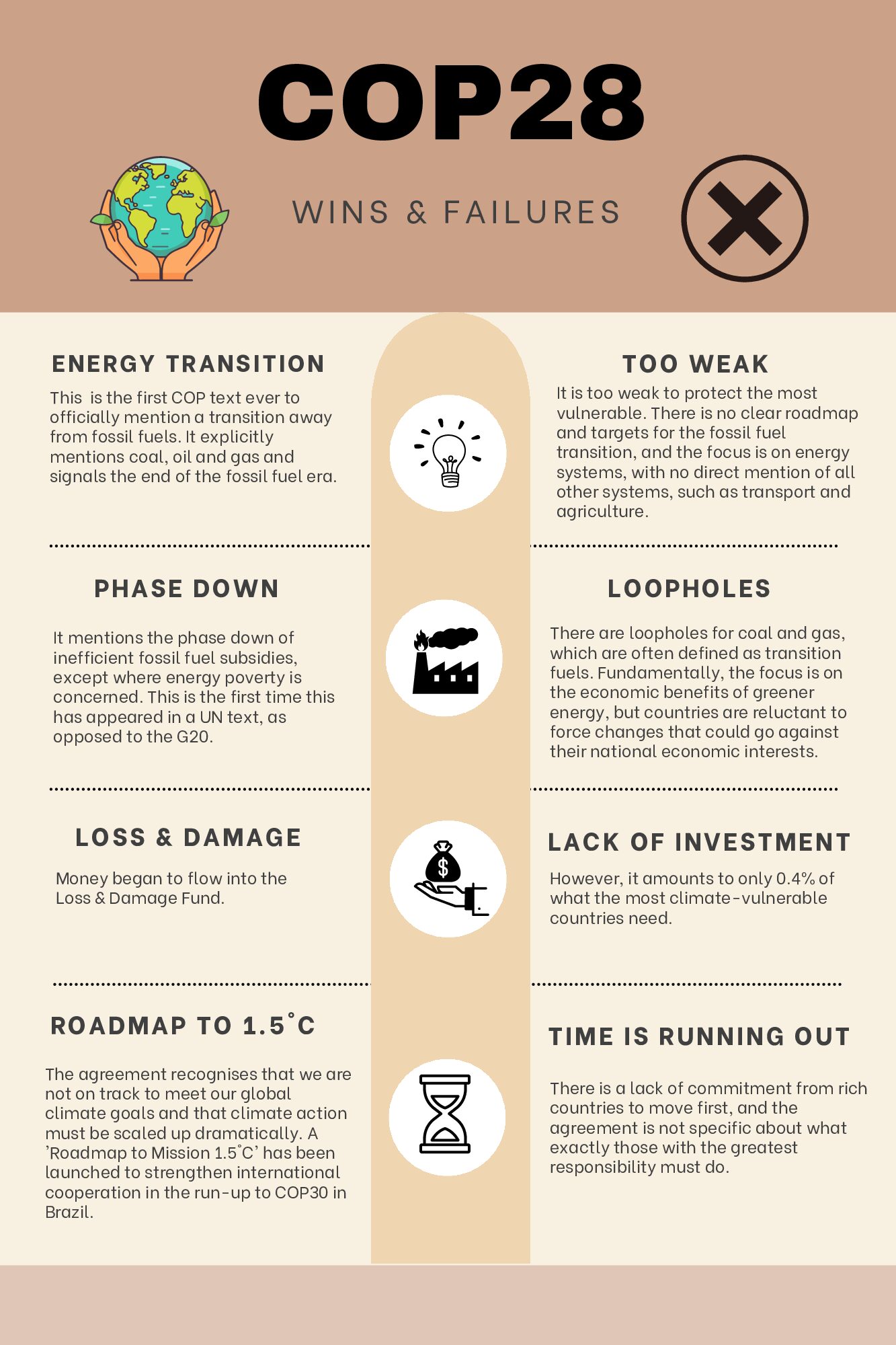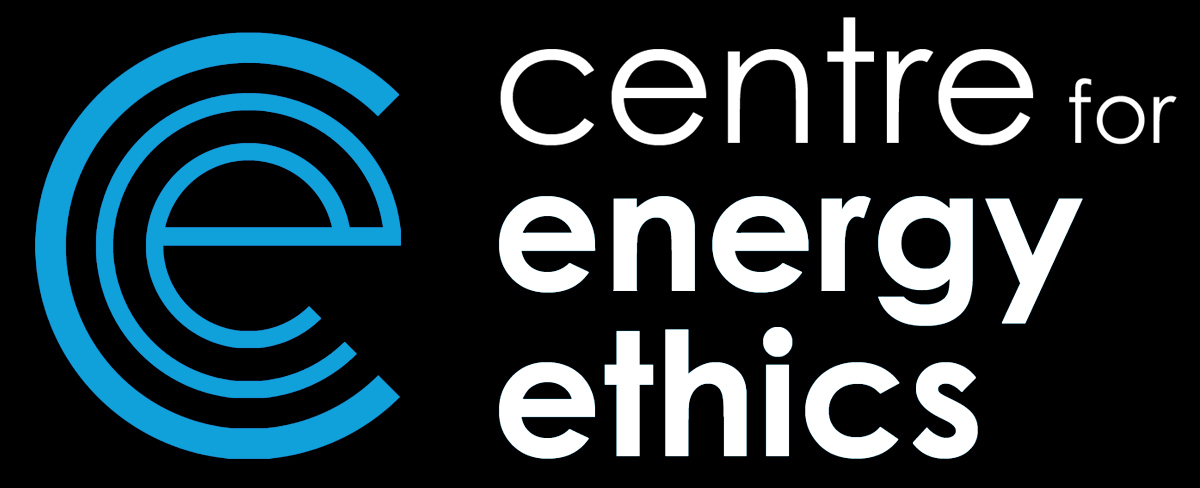Is the COP a forum for historic change or failure?
By Léa Weimann

I participated in my first big climate strike in Cape Town, South Africa, when the Paris Agreement was being negotiated at COP21 in December 2015. From that moment on I knew that I wanted to participate in a Conference of the Parties (COP) on Climate Change and make a real difference at the international level. I wanted to take the energy, passion, and frustration I felt as a teenager protesting in the streets into the negotiating rooms that decide our future. Eight years later, the reality of that dream is very different from what I had imagined.


Pictures 2 & 3: My first big climate demonstration in Cape Town, South Africa, December 2015
The first time I came close to this goal was in Glasgow for COP26, but my experience was mostly at the grassroots, civil society level. My first official COP as an observer inside the conference venue was COP27 in Sharm el-Sheikh, Egypt. COP climate conferences are divided into ‘green’ and ‘blue’ zones, which are two separate areas/conference venues. While the ‘green zone’ is generally open to the public and holds climate events and stalls, the blue zone is the venue where all the main negotiations take place, and you need to obtain an official badge to enter. The closed-off blue zone hosts all the official sessions, events, side events, and press conferences. Only party delegates, heads of state, admitted observers, and accredited press can access these.
COP27 was my first experience of what it meant to be a youth delegate at the site. I wore several hats during COP27, both as a youth delegate for the NGO Change for Planet and as a spokesperson of Youth for Ecocide Law. COP is one of those intense experiences that fully immerses me into the world of climate diplomacy in a way that is hard to understand while studying it from the outside and following the headlines, key texts, and outcomes. With every COP, I gained a deeper understanding about how the process works and how best to engage and have an impact. My experience at COP27 gave me valuable insights into how climate diplomacy works in practice. In addition, I found a community of young people from around the world with the same mission of protecting the planet and our future.

One year later, I travelled to Dubai for COP28 with a critical mindset, feeling anxious about the decisions that would be made for our future. Since COP27, I had discovered the amount of youth-washing that happens at COPs; youth speakers and delegates were invited to observe but had no real power to influence negotiations. In addition, the COP venue has become a kind of “festival” that draws participants away from the main negotiations to pavilions and side events. Although these can be very powerful, they are not the main focus and purpose of the conference. This was particularly eye-opening to me when I attended the ‘mid-COP conference’ – SB58 – at the UNFCCC headquarters in Bonn, Germany. This is where the Subsidiary Bodies (SB) meet each year to set the agenda for the COP, and where the preliminary discussions and negotiations take place. It is a much smaller conference, with limited badges and participants, and very few side events. The focus is purely on the technical and structural aspects of the climate negotiations. There are also fewer high-level politicians and government representatives in attendance. However, the civil society observers are much more focused on the negotiations and in trying to influence decision-makers. Nonetheless, it also highlights the marginal role that civil society and youth still play in these negotiations. UN observers are there to follow and observe but are rarely invited to make meaningful contributions. This reveals the crux of COPs – much of the ‘important’ work is done behind closed doors, with negotiators, diplomats, and international lawyers making key decisions before, during, and after COPs out of the spotlight.

COP28 was the largest Conference of the Parties on Climate Change to date and the venue was huge. I had to plan about 30 minutes to walk from one end of the venue to the other and that was when I knew exactly where I was going. It is both underwhelming and overwhelming to be there in person. Overwhelming because while it is important to have observers, civil society and press present at the negotiations, the conference has become too big with too many side events going on at the same time as the negotiations. Underwhelming, because this conference brings together thousands of people for our planet, and every year its results disappoint. Especially in light of the growing urgency of climate change, as evidenced by the most recent 6th Assessment Report of the Intergovernmental Panel on Climate Change (IPCC). This reveals some of the dualities of the COPs: more people are coming together to solve climate change – but global temperatures continue to rise; some progress is being made – but far too slowly; more young people are present – but no real high-level decision-making power is being given to those whose futures are at stake.
On the official final day of COP28, the draft COP document was far from “historic”. There was no mention of phasing out fossil fuels, and the language favoured the role and expansion of oil and gas. However, civil society, and in particular the Alliance of Small Island States (AOSIS), fought hard to change the narrative. The result, given the UN nature of consensus decision making, was a compromise, but before going into some of the dualities of COP28, let me say that without the resistance and pressure on the ground from activists and climate leaders, we would not even have had the current wins. That in itself is an important victory.

Considering the disastrous draft that started the final day of negotiations – important progress was made to change the overall outcome of COP28. Unfortunately, the COP decisions so far do not put the world on track to meet the goals of the Paris Agreement. The Global Stocktake of COP28 reflects this reality. The Global Stocktake is a process established under the Paris Agreement to assess collective progress towards its goals of limiting global warming. COP28 was the first “Global Stocktake” since the Paris Agreement and its results provide insights into the (in)effectiveness of climate action efforts worldwide, with the aim of guiding future policymaking and adjustments to meet climate goals. It comes as no surprise that the report shows that the world is not on track to limit greenhouse gas emissions and keep the world on track with the Paris Agreement Goals.
Although the COPs are more complex and difficult to influence than I initially thought, attending them has given me a deeper understanding about how climate diplomacy works in practice. Furthermore, it has inspired me to think more strategically on how to influence and shape climate action at high-level conferences like the SBs and COPs. What gives me hope at the COPs is seeing climate experts, civil society, my friends, and other young people coming together and fighting for our planet and our future. Amid the challenges at COP28, I cannot help but feel extremely grateful for my climate community and all those who have worked to spread awareness about solutions for nature, human rights, ecocide, rights of nature, and our future. Thus, I want to take this opportunity to acknowledge all the wonderful work and campaigning by youth, universities, and NGOs at COP28. We need advocates to continue to show up in this space to push for change, but we also need to demand action in other places around the world during the other 50 weeks of the year.
Political leaders must look beyond national interests and remember that we are one Earth. Climate change knows no borders. The COP negotiations cannot remain the main focus of the year in the climate bubble. We need climate action and environmental advocacy at all levels throughout the year because negotiating action for “later” is too late.

*All photo credits: Daniele Guadagnolo, except picture 2: Edda Weimann




